Dragon Quest Builders Game Review
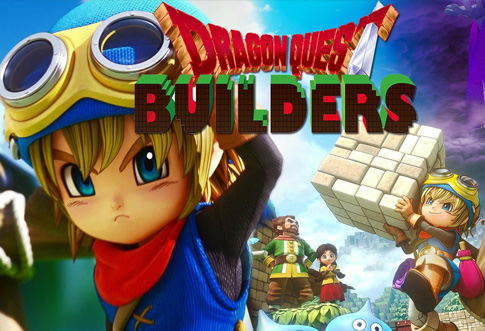
Building things and design towns is creatively and mechanically rewarding
Quest lines help introduce more sophisticated systems
Handcrafted worlds allow for exceptional challenges
Controls and camera are fiddly, particularly indoors
Fight is pretty basic and wonky
Dragon Quest Builders is easy to advocate. It may not be as heavy as its genre counterparts, but its mashup of crafting, survival components, and RPG questing place in the vibrant, cartoony world of Dragon Quest is a rewarding and breezy pleasure for players of all levels of creative power.
About The Game
The world lies in ruins; you’re the only one who can restore it to its former glory. It is a cliche among platitudes, and it is one that Dragon Quest has revealed in since the chain’ start. Dragon Quest Builders needs to do something a bit different, though. Instead of going from city to city using up things and destroying monsters, Contractors really needs you to create, to use your own two hands to craft your tools, reconstruct towns, and cleanse the world of evil through the magic of building.
Dragon Quest Builders positions itself as sort of an alternative sequel to the initial match in the collection, establish after its hero decides to strike a deal with the Dragonlord to join him and rule the world with an iron fist. With the world ruined, you awaken (after character creation – deciding your sex, skin color, and character name) in an underground cavern, the only one in a barren land who understands the best way to create. Over four chapters, you will travel to distant locales to reconstruct villages, fight an absurd amount of slimes and other Dragon Quest basic enemies, take on quests for new residents, and locate the necessary things for the magic weapons you will have to take down each area’s manager. It’s cartoonish appearance and narrative may seem straightforward, but it is as charming and bubbly as any other match in the set, with well-written characters and the trademark stylings of collection artist Akira Toriyama. It is absolute Dragon Quest fanservice, complete with a soaring orchestral soundtrack by original show composer Koichi Sugiyama.
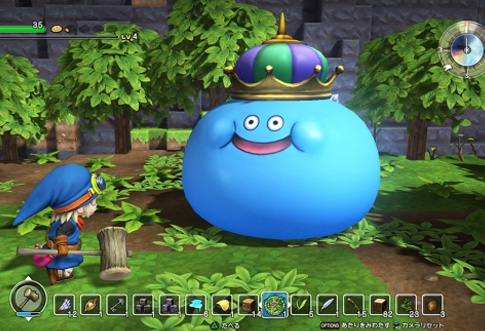
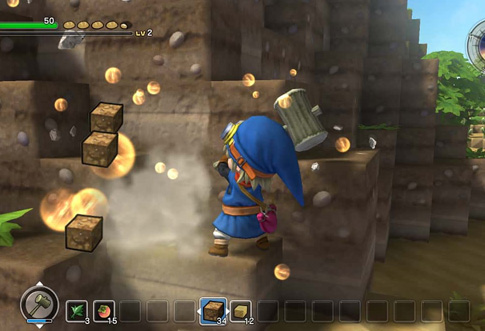
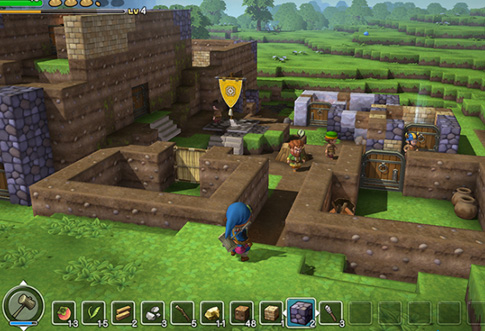
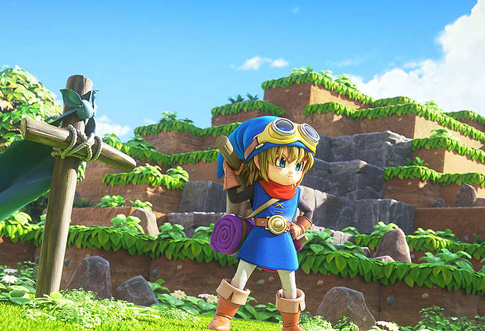
Game Features
To describe its gameplay in the most straightforward terms, Dragon Quest Builders game is a combination between survival and crafting games like Minecraft and action RPGs like The Legend of Zelda, joining the resource assembly of the former with the quest-established progression and fight of the last. When you begin, you will just have access to an introduction of basic, wooden things, which break easily and can simply deconstruct the simplest components. As you help villagers with their requests – whether that is bringing them a smattering of particular things, slaying monsters, or constructing and designing rooms to their terms – you will get access to new recipes, which consequently give you access to more things, tools, and materials.
It might seem that its two halves – the boundless imagination offered by its crafting systems and its more accurate story and quest-established construction – would be at odds, but they really complement each other very well. Besides the occasional pattern (which drives you to construct a room to exacting specifications), you are mostly free to construct each town however you enjoy. The only requirements to designing a room are that it’s a wall two squares high, a light source, and a door, and once a room is completed, you’ll be rated for your attempts. Distinct mixes of constructions will create particular types of rooms, which add incentives to your town, like letting your villagers cook food for you while you are away or allow them more powerful weapons in battle.
Really building things, for the most part, is comparatively painless, and even if you screw up, a few whacks will transform whatever you have put back into a miniature variation of that thing which you are able to pick up and set again. But the most remarkable thing is finding your hamlets grow and blossom over time. When you first arrive in a place, you will possibly have room to craft things and a basic bedroom with straw mattresses. By the time you are finished, you will have a bustling town with a half dozen other people milling about, each leading in modest but helpful manners. It feels extremely great to look back and see the improvement you have made and the things you have constructed.
Handcrafted construction, Dragon Quest Builders gameplay can supply exceptional challenges you will not see in other procedurally-created games. By the end of chapter one, you have probably got a handle on the best way to construct defensive structures and the way to update from wood to steel, to silver, and on. Once you step through the portal site to the next chapter, though, your health, things, and gear are reduced to the bare minimum once again, and the mineral-rich regions of chapter one give way to a barren, poisoned wasteland, where even basic components like wood are very rare. It is a little bummer to lose everything at first until you understand this new world now holds a completely distinct set of challenges that force you out of your comfort zone because you just do not have the same stuff accessible. Each chapter comes with its own set of unique surroundings and challenges to overcome, and while the primary quest is comparatively straightforward, there are numerous side places that need you to locate keys or solve puzzles to get the benefits concealed within.
If you are searching for some more freeform imagination, the Terra Incognita way is much closer to a typical Minecraft game, which drops you into a map where you are able to create to your heart’s content without anxiety about creature strikes. It’s possible for you to get portal sites that take you to the universes of the chapters you have cleared, so you could fight enemies and get access to unique components to customize your personal universe, and after that share your creations with other players online. You will not locate a creation package as deep as Minecraft’s, but you’ve enough tools at your disposal to create some impressive-looking structures, as long as you have the time and resources available to do so.
While the building and quest are well-executed and fleshed out, precisely the same can not be said for Contractors’ fight, which is very necessary and finally kind of wonky. Most fights are little more than watching for enemy wind up cartoons and attempting to go out of the way while mashing the attack button and trusting your weapons do not bust mid-fight. There are the occasional town defense quests, which demand you to fend off several waves of attackers while using the defenses you have constructed, but the moments where everything comes together (and the enemy AI joins forces with your snares) are comparatively uncommon compared to how the remainder of most encounters shake out. Finally, the activity simply is not all that heavy and pleasing, particularly when held up against its more rewarding crafting and town-building systems.
Contractors’ camera and controls may also fight against you sometimes, and generally at the most unsuitable moments. Most of the time, they are serviceable, but when you are in the thick of fight or in enclosed spaces, you will probably long for more responsive and precise controls and a camera that’ll really show you what you must see. If you wind up deep underground, as the camera pulls in so tight it is almost impossible to see what is happening. A straightforward first person style could have done a lot to mitigate these discouragements.
But even with these problems, Dragon Quest Builders is easy to advocate. It may not be as heavy as its genre counterparts, but its mashup of crafting, survival components, and RPG questing place in the vibrant, cartoony world of Dragon Quest is a rewarding and breezy pleasure for players of all levels of creative power.
Game Trailer
In order to have more insight into this game, you can watch this video from the following link:
You can visit the website of the Dragon Quest Builders Game Review to understand the game more.


























































































































































